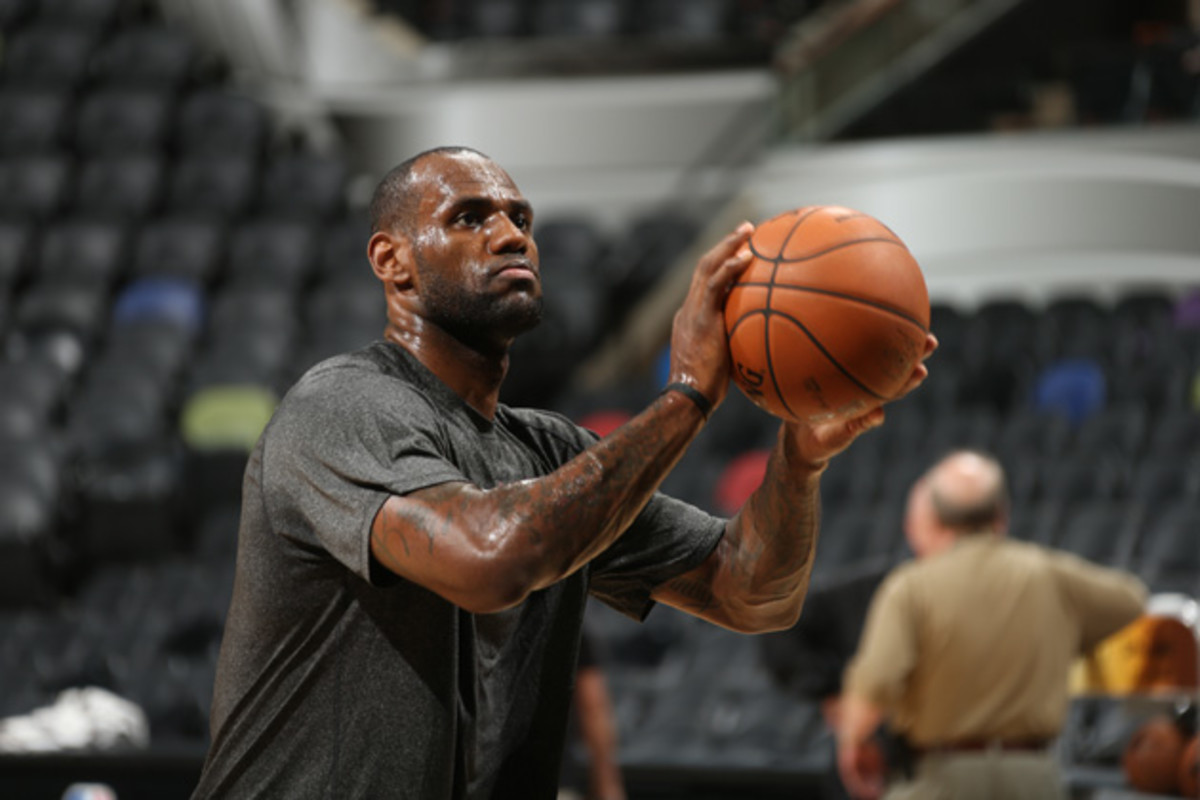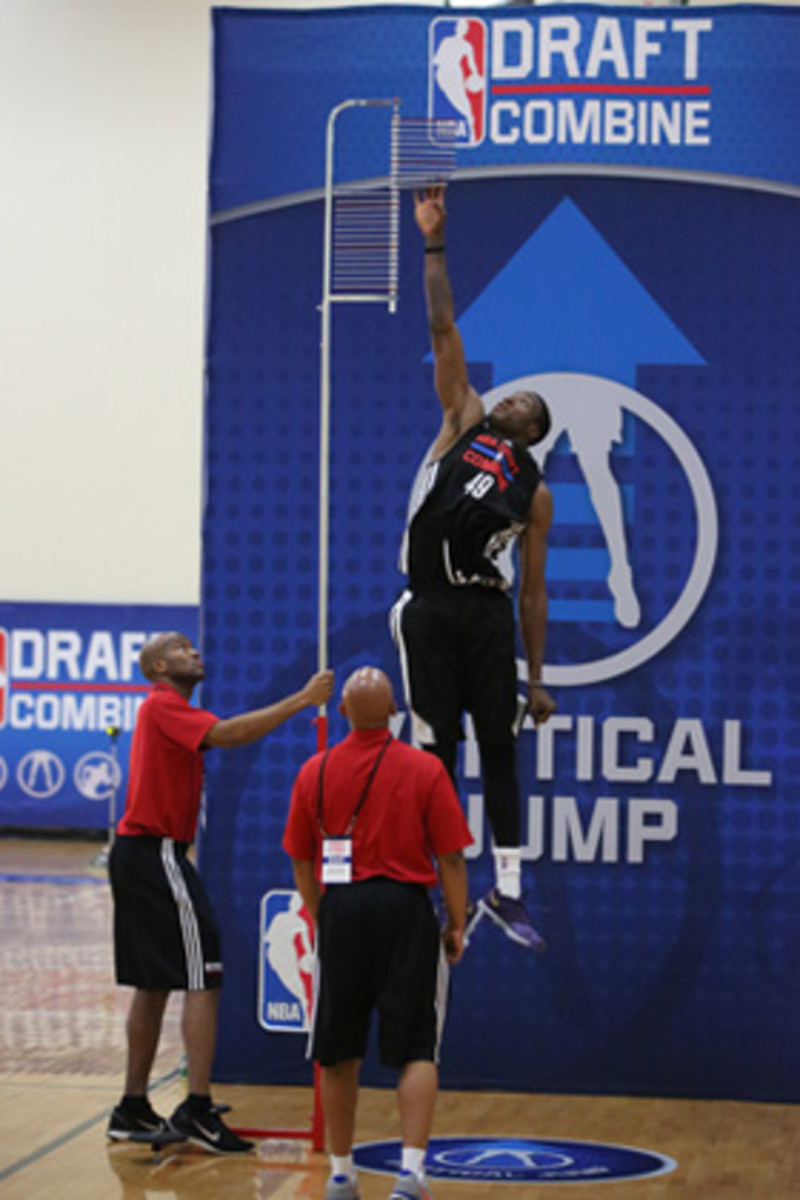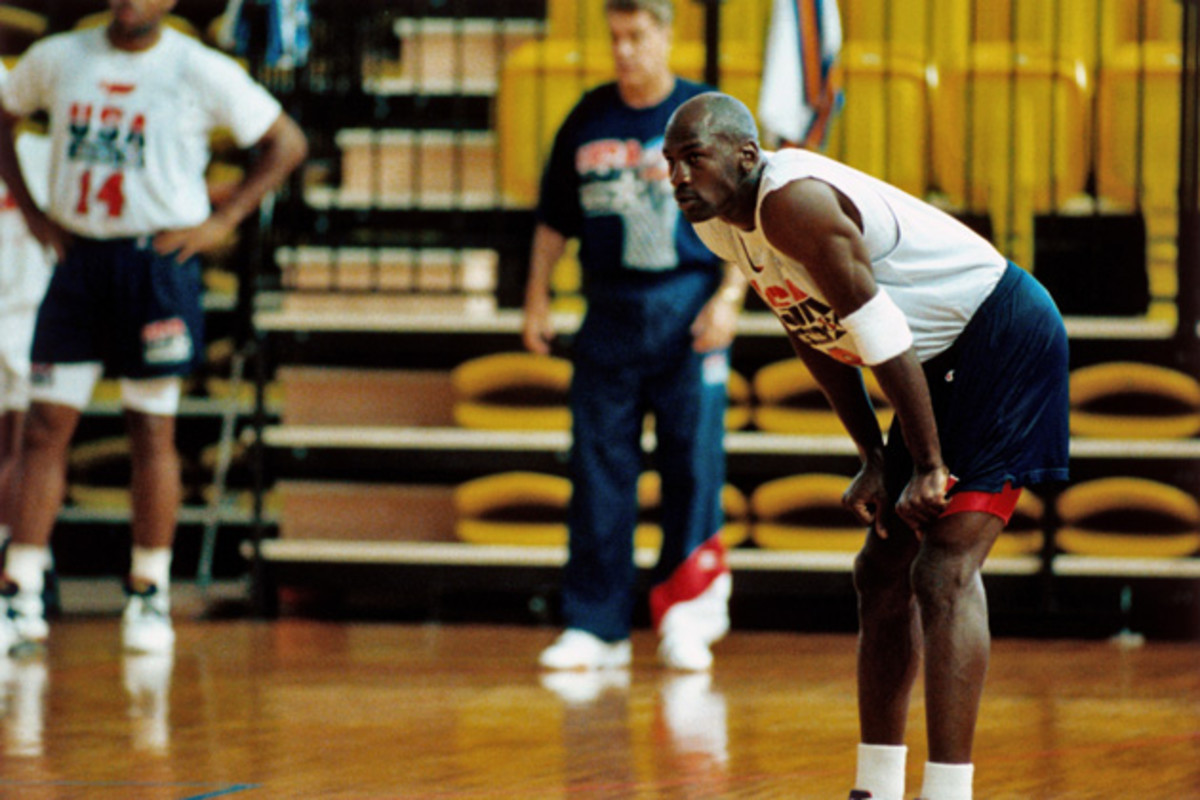For professional athletes, talent isn't enough to achieve greatness

This one is for all the guys who firmly believe that their entire lives would have been completely different—wealthier, happier, sexier—if only they had been given the rare and awesome ability to jump.
Let me make you feel better: I don’t test my players’ vertical jump. I’ll test it if someone asks me to, if a player or team really wants to know, but to me, it’s a shallow prediction of what an individual can actually accomplish as a competitive athlete, a measure of talent, not skill. Talent and skill aren’t the same thing; the world is full of talented people who have never achieved anything.
When I started working with Michael Jordan in 1989, his vertical jump was 38 inches. By today’s standards, that might not even get you drafted in the top ten; Andrew Wiggins reportedly had a 44” vertical jump before he was drafted No. 1 overall in the 2014 NBA Draft. Eventually we got MJ up to 42”—and then 48”—using the training program which later became my book JUMP ATTACK. But we weren’t specifically training for vertical jump; we trained for overall explosiveness and skill, and the vertical increase was just a by-product of the training.

It’s just a number. You know those people in school who always got good grades but were complete dunces in real life? Same principle here: If you train for a one-dimensional test, you’ll be a one-dimensional athlete. The truth is, the ability to jump straight up into the air one time in a completely controlled situation doesn’t indicate what you can do during a game. Can you do it with two guys in your face and another waiting to clock you when you come down? With the game on the line and lights in your eyes? Falling backwards? What about the second or third jump? That’s what I want to see. Game results, not test results. MJ and Kobe have scored more than 30,000 points in their careers; I’m not a stat guy but I’m pretty sure most of those points didn’t come from dunks.

I’m not just picking on testing vertical jump here. Draft Combines are supposedly designed to measure athletic ability, but cones don’t weigh 400 pounds and move at lightning speed. Everyone gets excited about a guy who runs a fast 40. But how often do you have a game situation where you’re running 40 yards in a straight line unopposed? It’s a test of speed and acceleration: that’s talent. I want to see skill. Show me you can explode for five yards, stop, cut, avoid the defense, change direction, and keep going…while maintaining that speed. Ask Jerry Rice: you don’t get to be the best by sprinting alone down an open field.
The end: How the greats attack longevity
The NBA Draft Combine includes a 185-pound bench press test. What are we proving there, how hard you can fire a chest pass? If you’re an NBA player on your back in the middle of a game pushing something away, you either need a referee or an ambulance. I want to see overall strength in competition, not while you’re lying on a bench. Kevin Durant couldn’t do one rep at his pre-draft Combine. Looks like things worked out well for him.
Look, there’s always going to be someone who jumps higher or runs faster than you. But if you’re a golfer who only works on your drive, now you’re Happy Gilmore. You can do one thing. If you can only dominate the vertical jump competition or the bench press, congratulations, now you’re a great vertical jumper or bench presser. It doesn’t make you a skilled and competitive athlete.
There’s no shortage of “great athletes” who rack up impressive scores and then turn out to be total busts. Why? Because raw athletic ability is a terrible predictor of how an athlete will perform when it counts. It counts when you're under the lights surrounded by screaming fans, facing intense opposition in a pressure situation, with everything on the line, at game speed—in a completely uncontrolled environment. Over the years these "great athletes" have received so much attention for their natural talent that they don’t bother developing their skills. They believe talent is enough.
It is not.
If the best thing you can say about an athlete is that he’s explosive, that’s not necessarily a good thing. The more explosive an athlete, the more likely he is to be injured—unless he has the skill and conditioning to match. And if he spends most of his time working on the same glamour move over and over, training for a test or a highlight reel, he’s never going to be prepared for real-time competition, that first hard hit in a game, the 4th quarter fatigue, the 80,000 fans who think you should do better.
Unfortunately, the glamour moves get the glory. Watch the postgame highlights, you can see big dunks, hard hits and crazy moves. Doesn’t matter who won or lost: This guy’s a beast, that guy’s a freak of nature. You know what you don’t see? The guy who does his job so thoroughly and intensely that you don’t even notice him coming; he just delivers the results.

Those are the guys who don’t care whether it’s a practice or a game, whether they’re alone in the gym or playing in front of millions. Most players make a distinction between the two: There are practice players and game players. Practice players can let loose in scrimmages, pickup games, training camp, preseason—give them the ball, they own the place. Then the season starts and it’s like watching a completely different player; they can’t perform under pressure. On the other end of the scale, you have game players, who go through the motions during practice, because they think they can save it for the games. If there’s no camera to catch the highlights, they can’t be bothered.
But the greats can do both. They practice and play exactly the same way, with intensity and purpose. They don’t train for a test or a highlight reel; they train to win, to get results, to be the best they can possibly be. I don’t want to hear an athlete say he turns it on under the lights, he shouldn’t even notice the lights.
MJ was relentless about consciously developing new aspects of his game. He’d start by himself, one-on-zero, working on something different. Then he’d use it against others in the gym. Then in an actual practice, and finally, he’d unleash it in competition. By then he’d worked on it so intensely—over and over and over—until it became so natural and instinctive he didn’t have to think about it. Prepare, learn, study, perform. The ability to jump high or dunk a ball is meaningless if you can’t do anything else.
It’s a progression: Talent can make you good; it gives you the opportunity to develop skill. Skill can make you great; it gives you the opportunity to develop that talent to the point where you can trust your instincts to take over. Instinct is what allows you to become unstoppable, to control your environment without having to think, the ability to walk through a dark room without bumping into furniture. A baseball player can feel when he’s hit the ball out of the park. A basketball player doesn’t have to watch the ball go in the hoop. They just know. That’s instinct. Talent, skill, instinct ... good, great, unstoppable.
You can’t achieve any of that by training for a single statistic on a standardized test—no matter how hard you work at it. Everything you do must have a purpose that leads to results. Nothing left to random chance, because random actions get random results.
Bulls' best shot at first post-Jordan title may be now
Athletic ability opens the door. Being smart keeps it from slamming in your face. The greats are both: smart first, athletic second, because you can stay smart a lot longer than you can stay athletic. When your physical talent begins to decline, it’s what you have from the neck up that determines how you’ll perform from the neck down. Athletic ability allows you to beat your competitors physically, one at a time. Being smart allows you to beat them mentally, all at once, over and over.
Are you working hard, or are you working smart? Working hard gets you the same result over and over. If you’re working smart, you’re constantly improving, finding ways to take it to the next level. The greats have so little room to improve, yet they’re the ones always pushing to get better. The gains you make in the offseason are meaningless if you can’t maintain them during the season. Your 40” preseason vertical is useless if you don’t work to develop it into in-season results.
Amazing how those with the least to prove work the hardest to keep proving it.
Bottom line: The ultimate measure of a competitor is determined by what you can’t measure—the intangibles. Anyone can measure height, weight, and speed, but you can’t measure intellect, commitment, persistence, or the instinctive ability to convert talent into results. Success depends on the strength of only one muscle: the one that beats in your chest.
Tim S. Grover is the CEO of ATTACK Athletics, world-renowned for his work with championship and Hall of Fame athletes. An international authority on sports performance and motivation, he trains elite athletes around the world, appears as a keynote speaker for corporations and sports organizations, and is the best-selling author of Relentless: From Good to Great to Unstoppable and Jump Attack. Follow Tim @ATTACKATHLETICSon Twitter, and visit www.attackathletics.com for more.
